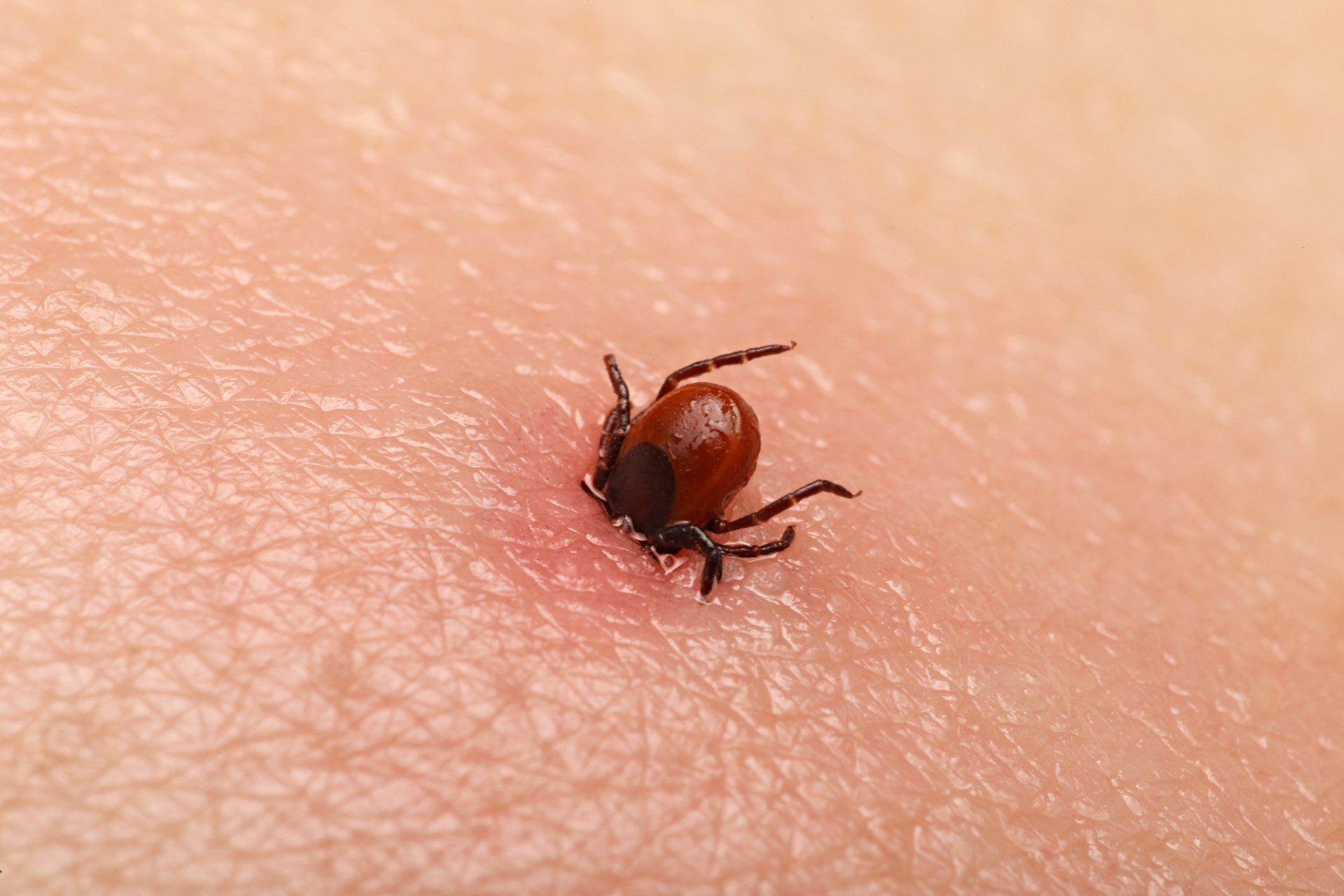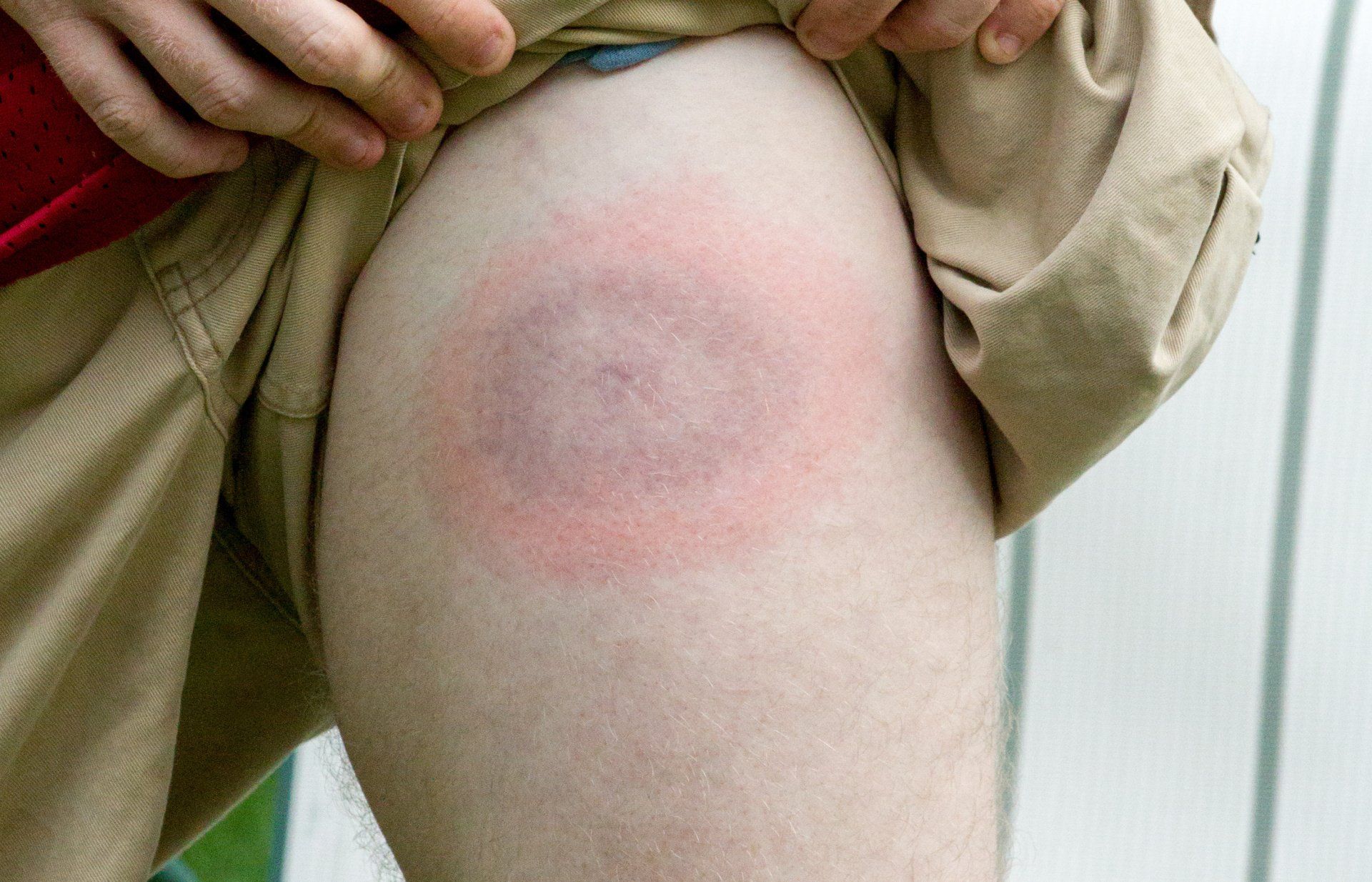Tick Diseases
Tick Borne Diseases That Can Be Transmitted to Humans

There are several species of ticks across the United States that capable of being infected with serious diseases. Not every tick is a carrier, but there are regions where a tick bite is much more likely to transmit a dangerous illness like Lyme disease. It is important to know what signs to look for because early detection is critical when it comes to treatment. It also helps to keep the tick if it is found and removed to test for potential diseases if symptoms show up after a tick bite.
Tick Bites
Ticks will bite different vertebrates because they need blood meals to grow. They depend on the sodium, iron, vitamins, and proteins that are found in the blood to develop into the next stage of the tick’s life cycle. They will make a small tear in the skin and bury their heads into the wound. Their saliva carries enzymes that act as anticoagulants and a mild anesthetic so they can feed unnoticed. The saliva is also how dangerous diseases are passed on to their host. If you are bitten by an infected tick, it has a strong chance of passing on whatever infection it carries unless the tick is found and removed immediately.
List of Tick-Borne Diseases
There are several serious diseases that ticks carry that can be dangerous and even deadly to humans if left untreated:
- Anaplasmosis: This tick disease is typically spread by blacklegged ticks in the northeast and upper Midwest regions of the US and by Western blacklegged ticks on the west coast. Symptoms include fever, chills, headaches, muscle aches, nausea, vomiting, and diarrhea. Late-stage symptoms can develop without treatment and include respiratory and organ failure followed by death.
- Babesiosis: This parasite infects red blood cells similar to malaria and is transmitted by blacklegged ticks in the northeast and upper Midwest.
- Borrelia Mayonii: This bacterial infection is spread throughout the upper Midwest region of the US by blacklegged ticks and can cause Lyme disease.
- Borrelia Miyamotoi: This bacterial infection is spread throughout the upper Midwest region of the US by blacklegged ticks and causes symptoms like fever, chills, headache, fatigue, and muscle and joint pain.
- Bourbon Virus: This RNA virus was first identified in 2014 in the Midwest and has symptoms that include high fever, headache, muscle and joint pain, fatigue, diarrhea, and vomiting. These symptoms can develop into acute respiratory distress syndrome, organ failure, and even death in worst case scenarios.
- Colorado Tick Fever: This rare viral infection can cause fever, fatigue, chills, headaches, body aches, sore throat, vomiting, and skin rash. This is transmitted by Rocky Mountain wood ticks in the western states of the US.
- Ehrlichiosis: This bacterial infection causes fever, muscle aches, headaches, nausea, vomiting, diarrhea, cough, and skin rash. This can be transmitted by lone star ticks in the southern states along the gulf and mid-Atlantic region of the US.
- Heartland Virus: This viral tick disease is spread by the lone star tick in the Midwest and southern gulf states. Symptoms can take 2 weeks to show up and include fever, fatigue, muscle and joint pain, headache, nausea, and diarrhea.
- Lyme Disease: This is a bacterial infection that can cause a bull’s eye skin rash, fever, fatigue, and headache. It is usually transmitted by infected blacklegged ticks in the northeast, upper Midwest, and mid-Atlantic states.
- Powassan Disease: This viral infection can cause fever, vomiting, headache, and weakness. Serious cases can lead to encephalitis, meningitis, and death. This disease is typically transmitted by blacklegged ticks in the northeastern United States.
- Rickettsia Parkeri Rickettsiosis: This bacterial infection can cause fever, skin rash, headache, and muscle pain. It is transmitted by several species of ticks across the United States.
- Rocky Mountain Spotted Fever: This bacterial infection can cause spotted skin rash, fever, chills, headaches, muscle aches, nausea, vomiting, and other neurological problems. Serious cases can lead to encephalitis, organ failure, inflammation of the heart and lungs, and even death. It is typically transmitted by dog ticks and rocky mountain wood ticks in western states.
- Southern Tick Associated Rash Illness: This new bacterial infection is similar to Lyme disease and is transmitted by lone star ticks in the southeast and south-central states of the US. Symptoms include a bull’s eye skin rash, fatigue, muscle pains, fever, and headache.
- Tickborne Relapsing Fever: This bacterial infection causes a high fever that fades and then returns. Other symptoms include headache, muscle and joint pain, chills, vomiting, coughing, diarrhea, skin rash, and confusion. It is found in western and southwestern states and transmitted by different species of ticks.
- Tularemia: Tularemia is transmitted by dog ticks, wood ticks, and the lone star tick all over the US. Symptoms include fever, chills, fatigue, muscle pain, cough, sore throat, vomiting, and diarrhea.
The Most Common Tick-Borne Disease
The most common tick-borne disease is Lyme disease. The Centers for Disease Control and Prevention (CDC) estimates that close to 500,000 people are infected and treated for Lyme Disease every year. This number continues to grow as warmer temperatures give ticks a longer season to search for food. The ticks that are responsible for passing on 95% of the diagnosed cases of this disease in America are found in the northeast and upper Midwest. Some states in these regions, like Pennsylvania, estimate that up to 45% of their tick population is infected with the bacteria that cause Lyme disease.
Lyme Disease Symptoms

Lyme disease symptoms can start in as little as 3 days and as long as 30 days later and include a bull’s eye rash, fever, chills, headaches, muscle and joint pain. The bull’s eye rash will start as a dark ring which expands outward. As the rash expands, the skin closer to the bite will lighten in color causing a dark exterior ring that resembles a bull’s eye target. Not everyone will experience the bull’s eye rash but roughly 60% of infected hosts will have it show up. If the rash does appear, it can last for several weeks before fading away.
When Should You See a Doctor?
If you find yourself bitten by a tick, try and get it removed properly and speak with a doctor right away because Lyme disease can be prevented if treatment is implemented within 72 hours of the bite. Be sure to save the tick in the event that any symptoms of illness start so you can have the tick tested for infectious disease to see if you are at risk of any other serious illnesses. Even if you do not manage to save the tick, but have noticed what could be a tick bite, it is important to monitor yourself for tick disease symptoms of illness. If there are any signs of skin rash, fever, chills, serious headaches, muscle or joint pain, nausea, diarrhea, vomiting, fatigue, or confusion then medical attention is recommended.
What You Should Expect at a Doctor’s Appointment for Tick Bite
Your doctor will provide you with a physical examination to check the bite site and then follow up by asking about any signs and symptoms that are out of the ordinary. Different tick-borne diseases can be difficult to diagnose because many of the diseases share similar symptoms. Identifying what illness you have is critical to ensuring that you receive the correct treatment. Diagnosis for some tick-borne diseases can usually be done by testing the tick if it is available or running a series of blood tests.
Lyme Disease Treatment
If a tick bite is noticed immediately and treatment can be provided within 72 hours of the bite, Lyme disease can usually be prevented all together. However, if Lyme disease is diagnosed, then it will take a full cycle of antibiotics that can sometimes take up to 28 days to treat the disease. Most people infected with Lyme disease recover but symptoms can persist for over 6 months.
How to Prevent Tick-Borne Diseases
The best way to stop tick disease in humans is to avoid tick activity all together. The following preventative measure are good ways to minimize the possibility of a tick bite:
- Avoid tall grass, bushes, and piles of leave and other organic debris
- Avoid grassy areas that are right next to densely wooded areas
- Use bug repellents that contain DEET which is designed to deter blood sucking insects
- Wear long sleeve shirts and pants with socks to minimize exposed skin
- Wear white or light-colored clothes so ticks become more visible when they latch on
- Wear your pants inside your socks to prevent ticks from crawling up your pant legs
- Keep long hair tied back when working outside
- Inspect yourself thoroughly for ticks after being in areas that are conducive to tick activity
- Keep you grass trimmed, pick-up piles of leaves, and keep your yard clean
Contact EcoGuard if You Have Suspect Tick Activity Around Your House
If you have found ticks on your pets or yourself and are concerned about a tick infestation outside your home, be sure to call the experienced tick exterminators at EcoGuard Pest Management. Our licensed tick control experts will inspect your property to identify any problematic areas that may benefit from an exterior treatment. Ticks can cause serious disease so do not hesitate to get your home and yard treated immediately.

















